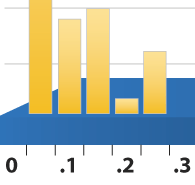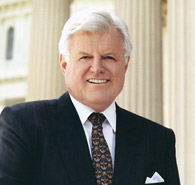by Siegfried Othmer | November 12th, 2009
 I have the impression that my newspaper, The Los Angeles Times, printed more articles on veterans’ issues today than they printed articles about Labor on Labor Day. Veterans’ issues are ok to write about; we can show that at least our hearts are in the right place. Labor issues have become more inconvenient. But veterans’ issues include the matter of returning to the labor force once they have been returned to health. I have the impression that my newspaper, The Los Angeles Times, printed more articles on veterans’ issues today than they printed articles about Labor on Labor Day. Veterans’ issues are ok to write about; we can show that at least our hearts are in the right place. Labor issues have become more inconvenient. But veterans’ issues include the matter of returning to the labor force once they have been returned to health.
We now know how to recover veterans from all kinds of mental health issues through neurofeedback comprehensively, cost-effectively and quickly—regardless of whether we are talking about traumatic brain injury, Post-traumatic Stress Disorder, or other less devastating mental dysfunctions. The barriers to the diffusion of our innovation into actual practice are clearly institutional. Meanwhile, lip service continues to be given to the issues.
Read More »
Posted in Application of Neurofeedback, Neurofeedback, PTSD, Veterans | 2 Comments »
by Siegfried Othmer | October 2nd, 2009
 Last May, Science Magazine featured a review of a recent study of human health going back some 10,000 years. Surprisingly, perhaps, our state of health has been declining generally over the last 3,000 years, coinciding essentially with the broad adoption of agriculture. The trends are not subtle, apparently. Statures have shrunk, and there was an increase in skeletal lesions, tuberculosis, and leprosy. People started living closer together, and in more intimate contact with livestock—the formula for increases in contagion in general, and of animal-to-human viral transfer in particular. Last May, Science Magazine featured a review of a recent study of human health going back some 10,000 years. Surprisingly, perhaps, our state of health has been declining generally over the last 3,000 years, coinciding essentially with the broad adoption of agriculture. The trends are not subtle, apparently. Statures have shrunk, and there was an increase in skeletal lesions, tuberculosis, and leprosy. People started living closer together, and in more intimate contact with livestock—the formula for increases in contagion in general, and of animal-to-human viral transfer in particular.
The switch to grain-based diets had further consequences for dental health, with cavities and tooth loss becoming more of a problem. Vitamin deficiency diseases such as rickets and scurvy became more prevalent during the Dark Ages. This trend only began to be broken in the middle of nineteenth century, presumably due to increased trade, better sanitation, improvements in medicine, and better weather after the Little Ice Age. Since the 1950’s, however, the overall trend has once again been downward, and this is showing up even in trends in stature, which can be taken as a kind of integrative index to health status.
Read More »
Posted in Application of Neurofeedback, Disregulation, Efficacy, Health Care, Neurofeedback, Outreach, Veterans | 3 Comments »
by Siegfried Othmer | October 2nd, 2009
 It is time for an update on our collective experience with infra-low frequency neurofeedback training. One impetus is the continuing confusion in the rest of the field about the implications of this kind of training, both theoretically and practically. Some are still skeptical of the whole enterprise. Others are coming to terms with it, but would prefer to regard it as filling certain niches within the panoply of neurofeedback approaches. Such pigeon-holing would nicely leave unperturbed whatever has come before in terms of neurofeedback approaches and understandings. While it is probably true that no single neurofeedback technique will cover all the bases, the infra-low training gives every sign of being broadly applicable to the concerns that surface in neurofeedback offices. It’s not just for PTSD and for the autism spectrum. It follows, then, that it must be folded into our thinking generally about neurofeedback and cannot be compartmentalized. It is time for an update on our collective experience with infra-low frequency neurofeedback training. One impetus is the continuing confusion in the rest of the field about the implications of this kind of training, both theoretically and practically. Some are still skeptical of the whole enterprise. Others are coming to terms with it, but would prefer to regard it as filling certain niches within the panoply of neurofeedback approaches. Such pigeon-holing would nicely leave unperturbed whatever has come before in terms of neurofeedback approaches and understandings. While it is probably true that no single neurofeedback technique will cover all the bases, the infra-low training gives every sign of being broadly applicable to the concerns that surface in neurofeedback offices. It’s not just for PTSD and for the autism spectrum. It follows, then, that it must be folded into our thinking generally about neurofeedback and cannot be compartmentalized.
The most striking clinical reports do relate to PTSD and to the autism spectrum, but that is simply because expectations are so modest with regard to both of those conditions. A reporting bias has crept in because we tend to emphasize those cases that defy the unbelief among the unbelievers. It continues to surprise that results in such “intractable” cases are so quickly achieved. One report found “huge improvements” in only sixteen sessions with respect to startle response, hypervigilance, troubling memories, disturbed sleep, and paranoia. A middle-age woman with an abuse history “benefited greatly” in only five sessions, by which time she reported that her PTSD symptoms were gone (although some sleep issues remained to be dealt with).
Read More »
Posted in Application of Neurofeedback, Efficacy, Neurofeedback | 2 Comments »
by Siegfried Othmer | September 2nd, 2009
 Thus reads the title of an editorial in Science Magazine by Cornell physicist Kurt Gottfried and former head of the NIH Harold Varmus in the March 20 issue. On behalf of the larger scientific community that is breathing a collective sigh of relief, the authors want to acknowledge the new regime in Washington. Said President Obama: “promoting science isn’t just about providing resources—it is also about protecting free and open inquiry…free from manipulation or coercion, and listening to what [scientists] tell us, even when it is inconvenient—especially when it is inconvenient.” Thus reads the title of an editorial in Science Magazine by Cornell physicist Kurt Gottfried and former head of the NIH Harold Varmus in the March 20 issue. On behalf of the larger scientific community that is breathing a collective sigh of relief, the authors want to acknowledge the new regime in Washington. Said President Obama: “promoting science isn’t just about providing resources—it is also about protecting free and open inquiry…free from manipulation or coercion, and listening to what [scientists] tell us, even when it is inconvenient—especially when it is inconvenient.”
In the President’s Memorandum of Scientific Integrity he called for new standards “designed to guarantee scientific integrity throughout the executive branch” and to ensure “that scientific data are never distorted or concealed to serve a political agenda.” This is as it should be. It takes care of the “in-house” problem that we had within the Executive branch during the previous Administration, where manipulation and coercion were rampant.
Site map
Read More »
Posted in Research, Scientific | 5 Comments »
by Siegfried Othmer | September 1st, 2009
 The death of Senator Edward Kennedy prompts a return to the theme of health care, which was his principal cause over his nearly fifty-year public career. The facts regarding health care don’t appear to be of decisive relevance at this crucial moment in the drama of health care legislation. Those facts not in hand are simply manufactured as needed. The dominant issue is rather one of values. And of course it was Kennedy’s own values that drove him as well. Kennedy was a faithfully devout Catholic throughout his life, even if the practice in his personal life at times fell short of the ideal. Taking time out on a political trip for mass during the middle of the week, a staff person asked him what drove him to be so passionate on the matter of health care. His curt response: “Have you ever actually read the New Testament?” The death of Senator Edward Kennedy prompts a return to the theme of health care, which was his principal cause over his nearly fifty-year public career. The facts regarding health care don’t appear to be of decisive relevance at this crucial moment in the drama of health care legislation. Those facts not in hand are simply manufactured as needed. The dominant issue is rather one of values. And of course it was Kennedy’s own values that drove him as well. Kennedy was a faithfully devout Catholic throughout his life, even if the practice in his personal life at times fell short of the ideal. Taking time out on a political trip for mass during the middle of the week, a staff person asked him what drove him to be so passionate on the matter of health care. His curt response: “Have you ever actually read the New Testament?”
So the core belief that inspired Kennedy’s liberalism was rooted in the New Testament generally, and in Catholic social teaching specifically. We have obligations toward our fellow man, and the more we are given in life, the higher those obligations are. Largely on the other side of the divide we have the evangelicals who grew up in the tradition of the Protestant Ethic, grounded as it is in individual initiative and a burden of individual responsibility. Both sides fervently believe in the power of prayer. But on the Protestant side emerged the conviction that if one did well in life, then that was a sign of God’s blessing being bestowed upon one’s enterprise. The individualistic and moralistic bias in evangelical Protestantism ultimately led to a strange alliance of convenience between evangelicals and an amoral and even predatory capitalism. Both nobly wished to be free of the yoke of government, despite the fact that both were effectively in charge of it. We finally have the lamb lying down with the lion, although that’s not quite what the New Testament writer had in mind. It was the lion that was supposed to lie down with the lamb.
Read More »
Posted in Neurofeedback | 4 Comments »
by Siegfried Othmer | August 29th, 2009
 We should be grateful, I suppose, that autism is now finally getting attention from the medical community. As late as the 1990’s, parents were still being blamed for the condition by their pediatricians. And until recently the attempts by DAN doctors (Defeat Autism Now) to get at the medical roots of the condition were mocked by their medical colleagues. But the developing mainline approach to autism exhibits the tendencies typical for modern medicine, which is to target the symptoms rather than the condition that gives rise to them. We should be grateful, I suppose, that autism is now finally getting attention from the medical community. As late as the 1990’s, parents were still being blamed for the condition by their pediatricians. And until recently the attempts by DAN doctors (Defeat Autism Now) to get at the medical roots of the condition were mocked by their medical colleagues. But the developing mainline approach to autism exhibits the tendencies typical for modern medicine, which is to target the symptoms rather than the condition that gives rise to them.
What follows is an actual case description of the treatment of sleep disorder and self-injurious behavior in the Child and Adolescent Psychopathology Department of Sainte-Anne’ s Hospital. One of the children presenting with severe autistic behavior exhibited persistent sleep disorder and motor instability even with the standard multidisciplinary program at the hospital. This led to successive prescriptions of several different psychotropic drugs:
Read More »
Posted in Application of Neurofeedback, Autism, Clinical Symptoms, Efficacy, Neurofeedback | 2 Comments »
|
|
Subscribe to Email Newsletter
The EEG Info Newsletter circulates via email at least once a month. A variety of topics related to the Neurofeedback / EEG Biofeedback field are covered in over 300 articles.
|
 I have the impression that my newspaper, The Los Angeles Times, printed more articles on veterans’ issues today than they printed articles about Labor on Labor Day. Veterans’ issues are ok to write about; we can show that at least our hearts are in the right place. Labor issues have become more inconvenient. But veterans’ issues include the matter of returning to the labor force once they have been returned to health.
I have the impression that my newspaper, The Los Angeles Times, printed more articles on veterans’ issues today than they printed articles about Labor on Labor Day. Veterans’ issues are ok to write about; we can show that at least our hearts are in the right place. Labor issues have become more inconvenient. But veterans’ issues include the matter of returning to the labor force once they have been returned to health.





 Last May, Science Magazine featured a review of a recent study of human health going back some 10,000 years. Surprisingly, perhaps, our state of health has been declining generally over the last 3,000 years, coinciding essentially with the broad adoption of agriculture. The trends are not subtle, apparently. Statures have shrunk, and there was an increase in skeletal lesions, tuberculosis, and leprosy. People started living closer together, and in more intimate contact with livestock—the formula for increases in contagion in general, and of animal-to-human viral transfer in particular.
Last May, Science Magazine featured a review of a recent study of human health going back some 10,000 years. Surprisingly, perhaps, our state of health has been declining generally over the last 3,000 years, coinciding essentially with the broad adoption of agriculture. The trends are not subtle, apparently. Statures have shrunk, and there was an increase in skeletal lesions, tuberculosis, and leprosy. People started living closer together, and in more intimate contact with livestock—the formula for increases in contagion in general, and of animal-to-human viral transfer in particular. It is time for an update on our collective experience with infra-low frequency neurofeedback training. One impetus is the continuing confusion in the rest of the field about the implications of this kind of training, both theoretically and practically. Some are still skeptical of the whole enterprise. Others are coming to terms with it, but would prefer to regard it as filling certain niches within the panoply of neurofeedback approaches. Such pigeon-holing would nicely leave unperturbed whatever has come before in terms of neurofeedback approaches and understandings. While it is probably true that no single neurofeedback technique will cover all the bases, the infra-low training gives every sign of being broadly applicable to the concerns that surface in neurofeedback offices. It’s not just for PTSD and for the autism spectrum. It follows, then, that it must be folded into our thinking generally about neurofeedback and cannot be compartmentalized.
It is time for an update on our collective experience with infra-low frequency neurofeedback training. One impetus is the continuing confusion in the rest of the field about the implications of this kind of training, both theoretically and practically. Some are still skeptical of the whole enterprise. Others are coming to terms with it, but would prefer to regard it as filling certain niches within the panoply of neurofeedback approaches. Such pigeon-holing would nicely leave unperturbed whatever has come before in terms of neurofeedback approaches and understandings. While it is probably true that no single neurofeedback technique will cover all the bases, the infra-low training gives every sign of being broadly applicable to the concerns that surface in neurofeedback offices. It’s not just for PTSD and for the autism spectrum. It follows, then, that it must be folded into our thinking generally about neurofeedback and cannot be compartmentalized. Thus reads the title of an editorial in Science Magazine by Cornell physicist Kurt Gottfried and former head of the NIH Harold Varmus in the March 20 issue. On behalf of the larger scientific community that is breathing a collective sigh of relief, the authors want to acknowledge the new regime in Washington. Said President Obama: “promoting science isn’t just about providing resources—it is also about protecting free and open inquiry…free from manipulation or coercion, and listening to what [scientists] tell us, even when it is inconvenient—especially when it is inconvenient.”
Thus reads the title of an editorial in Science Magazine by Cornell physicist Kurt Gottfried and former head of the NIH Harold Varmus in the March 20 issue. On behalf of the larger scientific community that is breathing a collective sigh of relief, the authors want to acknowledge the new regime in Washington. Said President Obama: “promoting science isn’t just about providing resources—it is also about protecting free and open inquiry…free from manipulation or coercion, and listening to what [scientists] tell us, even when it is inconvenient—especially when it is inconvenient.” The death of Senator Edward Kennedy prompts a return to the theme of health care, which was his principal cause over his nearly fifty-year public career. The facts regarding health care don’t appear to be of decisive relevance at this crucial moment in the drama of health care legislation. Those facts not in hand are simply manufactured as needed. The dominant issue is rather one of values. And of course it was Kennedy’s own values that drove him as well. Kennedy was a faithfully devout Catholic throughout his life, even if the practice in his personal life at times fell short of the ideal. Taking time out on a political trip for mass during the middle of the week, a staff person asked him what drove him to be so passionate on the matter of health care. His curt response: “Have you ever actually read the New Testament?”
The death of Senator Edward Kennedy prompts a return to the theme of health care, which was his principal cause over his nearly fifty-year public career. The facts regarding health care don’t appear to be of decisive relevance at this crucial moment in the drama of health care legislation. Those facts not in hand are simply manufactured as needed. The dominant issue is rather one of values. And of course it was Kennedy’s own values that drove him as well. Kennedy was a faithfully devout Catholic throughout his life, even if the practice in his personal life at times fell short of the ideal. Taking time out on a political trip for mass during the middle of the week, a staff person asked him what drove him to be so passionate on the matter of health care. His curt response: “Have you ever actually read the New Testament?” We should be grateful, I suppose, that autism is now finally getting attention from the medical community. As late as the 1990’s, parents were still being blamed for the condition by their pediatricians. And until recently the attempts by DAN doctors (Defeat Autism Now) to get at the medical roots of the condition were mocked by their medical colleagues. But the developing mainline approach to autism exhibits the tendencies typical for modern medicine, which is to target the symptoms rather than the condition that gives rise to them.
We should be grateful, I suppose, that autism is now finally getting attention from the medical community. As late as the 1990’s, parents were still being blamed for the condition by their pediatricians. And until recently the attempts by DAN doctors (Defeat Autism Now) to get at the medical roots of the condition were mocked by their medical colleagues. But the developing mainline approach to autism exhibits the tendencies typical for modern medicine, which is to target the symptoms rather than the condition that gives rise to them.